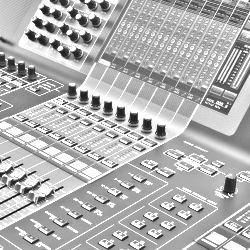With the plethora of new (and affordable) digital mixers on the market, it’s easy to be overwhelmed with features, options and pricing.
So how do you determine the right board for your situation? I use the same criteria as purchasing an analog console with just a few additional twists.
When purchasing an analog console, there are five primary aspects that I suggest looking at. (Well, six if you include price.)
1) Quality. I’m a big fan of “touching and feeling” a console. Being a tactile person, the overall construction quality can be useful in terms of determining reliability and lifespan. I’m also a big fan of listening before purchase. Some of the apparently well-built consoles have sounded just as rugged as they look! Touch and listen carefully.
2) Reputation. With the internet, it’s pretty easy to find out about a company’s reputation, which is a good way to start further informing your decision. I also rely heavily on the peer network I’ve developed over the years—the opinion of my colleagues matters greatly to me. If you’re newer to the craft, tap into some seasoned veterans via product reviews and by posting questions for the community on the PSW Church Sound Forum.
3) I/O. How many inputs and outputs do you need today? And how many do you anticipate needing in the future? My rule is to add at least 25 percent more to what you are currently using. For example, say you’re currently using 15 inputs and 4 aux/monitors. Look at the next step up from a 16-channel board, which is most likely a 24-channel board with at least 6 aux/monitors. A word of caution: not all manufacturers count channels the same way. My own methodology is to count the number of channels with preamps and consider that the total.
4) Busing. This ties closely with I/O when talking about the number of aux sends available. There should also be focus on what other outputs a console offers (i.e., matrix, control room), and what type of routing is available. Are there sub groups? Can I use an insert on a sub group? And so on…
5) EQ. How robust is the EQ section? Are there sweepable EQs? Is there a Q knob? Is there high-pass filtering? Also, listen to the EQ when making changes: does it sound responsive? Does it seem to overly color the sound?
Digital Twists
I/O configuration. Digital consoles usually offer a digital snake and more I/O than analog models. The challenge is to figure out, physically, where you need the I/O. Does the console itself have limited I/O? Will you need to add a local input rack? How does the digital snake connect to the console? What configuration do the stage boxes come in, and where do you need to place them?














